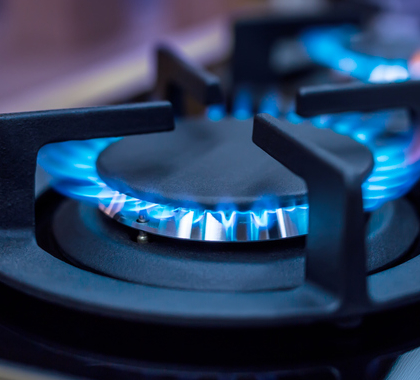A report prepared for the Ohio Oil and Gas Energy Education Program shows increased oil and natural gas production from hydraulic fracturing (“fracking”) saved American consumers $1.1 trillion from 2008 through 2018.
That amounts to more than $900 in annual savings for each U.S. household, or $9,000 in cumulative savings per household over the decade.
Lower Prices = Big Savings
These savings come from the lower cost of natural gas resulting from increased production. According to the November report by Kleinhenz & Associates, “natural gas as measured using the average Henry Hub price has declined from a 2008 high of $8.86 to an estimated 2018 price of $3.16.”
Lower natural gas prices have saved households in the bottom 20 percent of incomes an average of 2.7 percent of their income.
“This is equivalent to a raise of 2.7 percent for the poorest households,” the report states.
The paper says states in the “Shale Crescent”—Ohio, Pennsylvania, and West Virginia—are “responsible for 85 percent of the net growth in natural gas daily production over the past ten years and now [account] for nearly one-third of U.S. natural gas annual production.”
In these states, total savings since 2009 amount to almost $93 billion: $45 billion in Ohio, $43 billion in Pennsylvania, and $3 billion in West Virginia. Industrial and manufacturing end users in Ohio, Pennsylvania, and West Virginia saved $13.9 billion, $9.5 billion, and $1.3 billion respectively over the decade, for a total savings for industry across the region of $24.7 billion.
Use More, Save More
The report also concludes households using natural gas directly experienced more than $4,000 in annual savings over the course of the decade, notes former North Dakota state legislator Bette Grande, a research fellow at The Heartland Institute, which publishes Environment & Climate News.
“The savings for households from lower natural gas prices are even greater [than in the Shale Crescent] in North Dakota and other northern states where natural gas is the primary heat source for the majority of homes and businesses over the long, cold winters,” Grande said. “When heating our homes, driving our cars, or buying the food we eat and the products we use every day, the shale revolution is paying dividends for American families.”
Benefits Confirmed
The Kleinhenz & Associates report lends further credence to another study that determined people across the country have saved billions of dollars as a result of the increase in oil and gas production in enabled by fracking the past decade.
A report by the White House Council of Economic Advisors (CEA) found increased oil and gas production saved American families $203 billion annually on gasoline and electricity bills—$2,500 per family per year.
“From 2007 to 2019, innovation in shale production brought an eight-fold increase in extraction productivity for natural gas and a nineteen-fold increase for oil,” CEA’s October report states. “These productivity gains have reduced costs and spurred production to record-breaking levels.
“As a result, the United States has become the world’s largest producer of both commodities, surpassing Russia in 2011 (for natural gas) and Saudi Arabia and Russia in 2018 (for oil),” the report states. “CEA estimates that greater productivity has reduced the domestic price of natural gas by 63 percent as of 2018 and led to a 45 percent decrease in the wholesale price of electricity, [and] shale production has also reduced the global price of oil by 10 percent as of 2019.”
Eighty percent of the $2,500 annual household savings comes from the reduction in the price of natural gas, which has helped lower electricity costs by 45 percent since 2007, with the other 20 percent of savings coming from lower costs for gasoline and heating fuels, the report states.
Poor Benefit the Most
For low-income families, who spend the largest share of their income on energy costs, the savings from less-expensive transportation fuels and natural gas are significant.
CEA reports families in the lowest income quintile save 6.8 percent of their total income. The highest income quintile gets a 1.3 percent savings.
“In other words, lower energy prices are like a progressive tax cut that helps the poorest households the most,” CEA states. “The variation in savings stems heavily from differences in spending on electricity: according to the 2018 Consumer Expenditure Survey, the bottom 20 percent of households account for 8.6 percent of expenditures in general but 14.1 percent of electricity expenditures.”
Lower oil and gas prices reduce households’ economic worries, says Isaac Orr, a policy fellow at the Center of the American Experiment.
“Consumers are eager to snap up Black Friday deals on items on their loved ones’ Christmas lists, but if they’ve been paying attention they’d realize they’ve been getting Black Friday deals on energy every day for a decade, courtesy of hydraulic fracturing driving down the cost of natural gas and oil,” Orr said.
“Fracking is delivering real benefits to real consumers today in the form of reducing the stress energy costs place on their budgets and their families,” Orr said.
Timothy Benson ([email protected]) is a policy analyst for The Heartland Institute.
Internet Info
Tim Benson, “Research & Commentary: New Report Says Fracking Saved Americans $1.1 Trillion Over Past Decade,” The Heartland Institute, November 21, 2019: https://heartland.org/publications-resources/publications/research–commentary-new-report-says-fracking-saved-americans-11-trillion-over-past-decade





